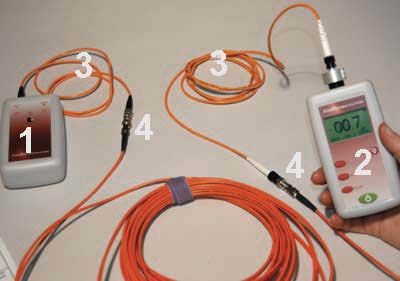Ways robotic vision can cut waste and optimize quality control
All You Required to Understand About Robotic Vision and Its Applications in Advanced Optical Dimension Solutions
Robotic vision represents a significant innovation in the junction of computer vision, synthetic knowledge, and artificial intelligence. This innovation boosts the accuracy of optical measurement systems, enabling real-time information evaluation and enhanced quality assurance. Its impact spans numerous sectors, from manufacturing to healthcare. The progressing landscape of robot vision increases concerns about future capabilities and applications. What technologies lie in advance in this transformative area?
Comprehending Robotic Vision: Trick Concepts and Technologies
Robotic vision includes the modern technologies and techniques that allow equipments to translate and comprehend aesthetic information from their atmosphere. This field integrates aspects of computer system vision, artificial intelligence, and maker discovering to help with automatic decision-making based on aesthetic information. Key principles include picture handling, which includes the improvement and analysis of photos to remove meaningful functions, and item recognition, which allows devices to recognize and classify things within a scene.

The Assimilation of Robotic Vision With Optical Measurement Equipments
As markets increasingly demand precision and effectiveness, the assimilation of robotic vision with optical measurement systems has actually become a transformative strategy. This harmony enables robots to regard and analyze their environments, enhancing the capacity of optical dimension systems to evaluate and evaluate items with exceptional accuracy. By outfitting optical sensing units with innovative imaging innovations, robot vision allows real-time data collection and processing, helping with prompt changes to measurement criteria.
Additionally, the combination equips automated systems to identify variations in measurements, surface top quality, and alignment, which are crucial in quality assurance procedures. Boosted formulas, such as artificial intelligence, additional enhance this integration by enhancing the systems' ability to adjust to different atmospheres and situations. Consequently, the assimilation not only simplifies dimension procedures but additionally minimizes mistakes, ensuring that products meet stringent sector standards, consequently strengthening the role of robotic vision in the future of optical dimension systems.
Applications of Robotic Vision in Production
In modern-day manufacturing atmospheres, making use of vision systems has actually changed production procedures by allowing makers to do jobs with impressive accuracy and speed. Robotic vision systems are significantly used for quality assurance, where they examine items for issues and warranty adherence to specs. These systems utilize video cameras and progressed algorithms to evaluate items in real-time, considerably reducing the threat of human error.
Additionally, robotic vision assists in automation in assembly lines, permitting robotics to precisely determine components and assemble them with very little downtime. This technology likewise improves supply monitoring, as vision systems can check supply levels and spot discrepancies, guaranteeing a seamless supply chain.
Furthermore, robotic vision help in the implementation of clever manufacturing Learn More Here facilities, where information from vision systems can be incorporated with various other modern technologies to enhance process. Overall, the applications of robotic vision in producing show its essential duty in boosting efficiency, top quality, and efficiency throughout various fields
Robotic Vision in Health Care: Reinventing Person Care

In rehabilitation, robot vision aids in keeping track of client development and tailoring treatment sessions to private needs. It sustains physician by automating jobs such as information collection and individual monitoring, permitting more time to concentrate on direct patient communication. Additionally, robot vision boosts telemedicine by making it possible for remote medical diagnosis and virtual assessments, connecting the gap between clients and medical care providers. Generally, the application of robot vision in healthcare is reinventing person treatment, bring about improved end results, performance, and person satisfaction.
Future Fads and Growths in Robotic Vision Innovation
The quick advancement of robot vision modern technology guarantees to better improve its applications throughout various fields, including health care. Future fads show a considerable shift in the direction of incorporating man-made intelligence and machine learning, allowing systems to pick up from huge datasets and improve precision in time. Enhanced sensing unit modern technologies and deep learning formulas are anticipated to fine-tune things acknowledgment capacities, enabling robotics to analyze complicated atmospheres better.

In addition, the integration of enhanced reality (AR) with robotic vision will likely change just how robots help in medical treatments and diagnostics. This synergy will promote real-time data visualization, enhancing decision-making processes. Additionally, miniaturization of parts will certainly cause more small and functional robot vision click reference systems suitable for a selection of jobs. As these improvements unravel, industries will witness raised automation and effectiveness, strengthening robot vision as a cornerstone of ingenious technical remedies.
Regularly Asked Inquiries
What Are the Main Elements of a Robot Vision System?
The major parts of a robotic vision system include video cameras for picture capture, cpus for data analysis, formulas for analysis, and actuators for activity. Together, these components allow robots to regard and interact with their atmosphere effectively.
Exactly How Does Robotic Vision Improve Precision in Measurements?
Robotic vision boosts measurement precision by making use of advanced imaging technologies, making it possible for accurate things detection and spatial evaluation. This capacity minimizes human mistake, enhances repeatability, and permits real-time changes, eventually enhancing general measurement reliability and effectiveness.
What Industries Benefit Most From Robotic Vision Innovation?
Various industries profit greatly from robot vision modern technology, consisting of manufacturing, healthcare, agriculture, and logistics. These industries make use of boosted precision, performance, and automation, causing improved efficiency and minimized operational costs in their respective processes.
Can Robotic Vision Systems Operate In Low-Light Issues?
Robotic vision systems can certainly function use this link in low-light problems, making use of sophisticated sensing units and formulas to improve photo clarity. This capability enables them to perform effectively in various environments, including industrial and monitoring applications, despite minimal lighting.
What Are the Prices Connected With Implementing Robotic Vision?
The prices linked with implementing robotic vision differ substantially, influenced by parts such as cams, software, and assimilation. Extra expenditures include maintenance, training employees, and potential upgrades to existing systems, which can build up with time.